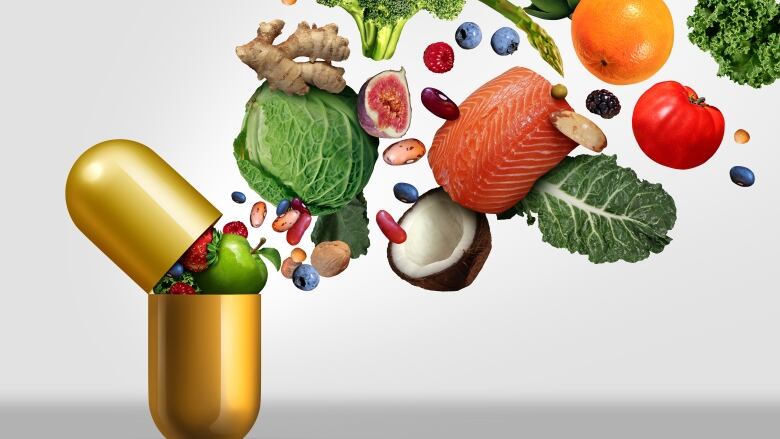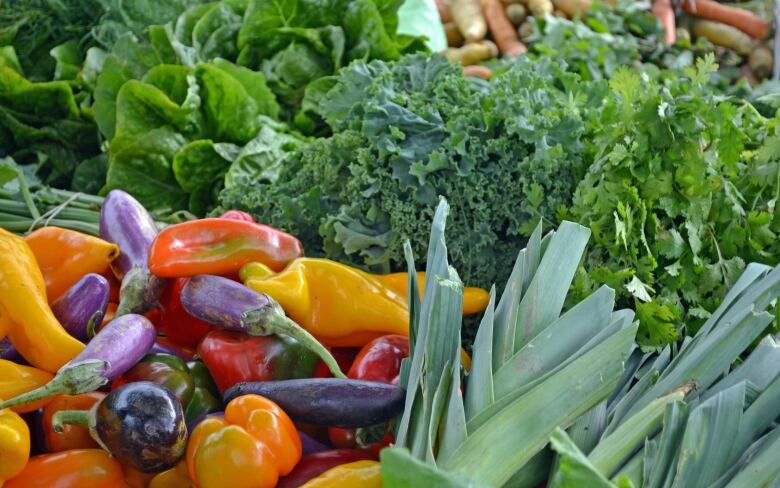A drug to prevent 1 in 5 deaths? It's called 'food'
The problem is that the barriers to healthy eating are all around us

This is an excerpt from Second Opinion, a weekly roundup of eclectic and under-the-radar health and medical science newsemailedto subscribers every Saturday morning. If you haven't subscribed yet, you can do that byclicking here.
If a drug could prevent one out of five deaths around the world it would be a blockbuster.
And if that drug had no side-effects, was easy to take and was already available without a prescription, it's hard to imagine that it wouldn't be used immediately.
There is such a drug, at least metaphorically speaking. It's called food specificallyfresh fruits, nuts, whole grains and vegetables.
Astudy published this week in The Lancet determined that11 million deaths in 2017 were associated with thefailure to take advantage of this simple health intervention.
"We found that improvement of diet could potentially prevent one in every five deaths globally," the authors wrote.
More than half of diet-related deaths and manydiet-related disabilities were attributed to three factors: too much salt, too few whole grains and not enough fruits.
So how can such an apparently straightforward life-saving intervention people eating less salt and more grains and fruits be so complicated to implement?
Research has shown that improving population nutrition is about much morethan simply focusing on healthy foods.That's because most food choices are beyond our individual control.
"I think we justifiably like to think we have a lot of control over the food choices we make," said Dr. Catherine Mah, a population health researcher at Dalhousie University in Halifax. "We don't like to think we're being manipulated for our food choices and we don't like to think we're restrained in any way."
Costof fresh vegetables isrising
Yet the barriers to healthy eating are all around us. Just check the current prices of fruits and vegetables in Canadian grocery stores.
Since last February, the price of fresh vegetables in Canada increased by more than 14 per cent, according to Statistics Canada. Fresh fruit prices went up four per cent. And those prices are still increasing.

"Vegetable prices are influenced by seasonal cycles of supply origin as well as weather and crop conditions in their respective source countries," Joelle Bigras, a communications officer for Statistics Canada, said in an email to CBC News.
She cited the recent E. coli outbreak linked to romaine lettuce as an example of what can happen to force prices up. The price of lettuce has increased by 20 per cent since last year.
"When the outbreak forced retailers to pull romaine lettuce from the shelves, consumer demand for other types of lettuce exceeded supply, resulting in higher prices."
Canadian potato prices went up 12 per cent because of "an unusually poor growing season."
Dalhousie University's annual food report predicts vegetable prices will increase by another four to six per cent in 2019.
And then there's the problem of geography whether you live close to a store that stocks fresh produce.
Last week, a CBC Marketplace investigation revealed the extreme prices of food in Canada's North. The investigation showed that a family in Iqaluit paid double the price for the same groceries as a family in Winnipeg.
Information is not enough
Meanwhile, much of Canada's nutrition policy is based on the assumption that an individual's food choices can be changed by providing more information. That's why government policies are focused on modifyingproduct labels and providing more public education about nutritious food.
But researchers say people already know how to eat a healthy diet.
"Who doesn't know what's healthy and not healthy? I don't know anyone who doesn't know," said Dana Olstad, a public health researcher at the University of Calgary. Her analysis of diet quality in Canada, published recently inCMAJ, challenges the use of labelling and other public health education as an effective way to improve nutrition.
"We try to make it so simple. Just make better choices. And we make the individual responsible for making those better choices. But we do nothing to help them," said Olstad, adding that there's lots of evidence that people are already motivated to eat healthier food.
"But why don't they do it? That's really because of our environment. It's all shaped to push the most profitable options and those options are the less healthy foods that can be mass produced that are really cheap."
Dr. Gary Bloch is family physician in downtown Toronto. He said his patients don't need better food labels. They already know which foods are healthy. But there are other factors affecting their choices.
"I carry out dietary counselling and exercise counselling and all of that with my patients, but along with that I always pair it with an assessment of their social situation and, to the best of my ability, an attempt to help them improve their social situation."
That involves getting them to file taxes to take advantage of tax support programs and connecting them to income and disability support programs, even providing them access to an income specialist and a lawyer professionals that are part of the medical team to help patients deal with housing and other legal issues.

To improve their nutrition, they need less precarious lives overall, Bloch said.
"I see this in my practice all the time," he said. "They're still developing diabetes and heart disease and obesity and all these other conditions at a way higher rate than anyone else because of their social conditions."
An apple a day?
What's needed, Mah said, is a collective approach, with neighbours and communities and employees pushing for a better food environment.
"My takeaway tends not to be 'eat more fruits and vegetables.' It's change things at your workplace, band together with people in your neighbourhood to improve the food that's available, because that's going to be more powerful than every person eating one more apple."
Although if everyone did eat one more apple that would also be good, Mah said.
But that apple will cost more than it used to. Statistics Canada reportsthe price of apples has increased by almost 15 per cent since last year.
To read the entire Second Opinion newsletter every Saturday morning,pleasesubscribe.












_(720p).jpg)


 OFFICIAL HD MUSIC VIDEO.jpg)
.jpg)



























































































